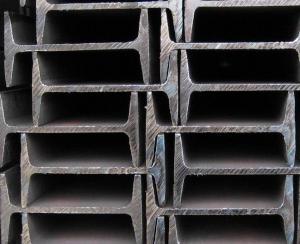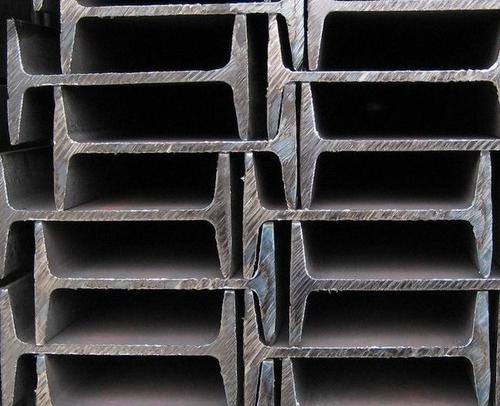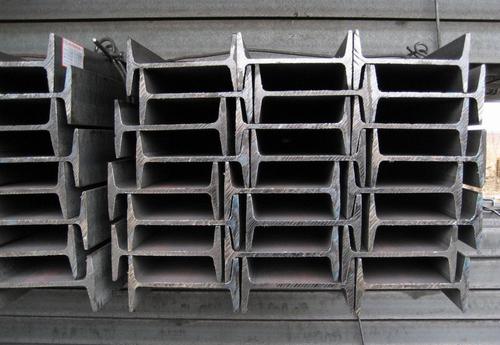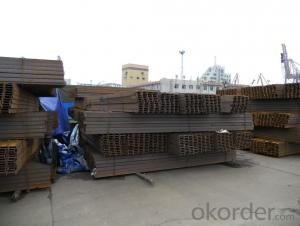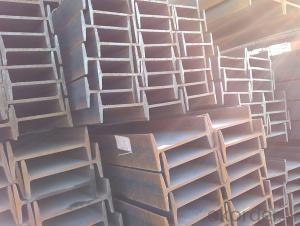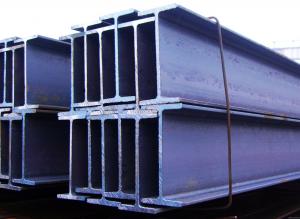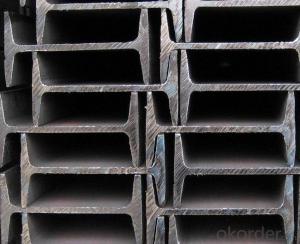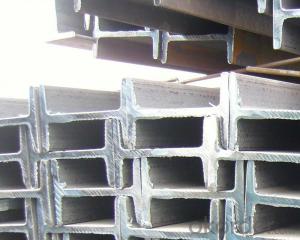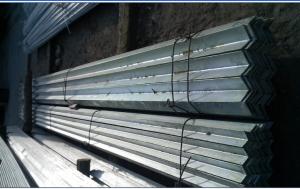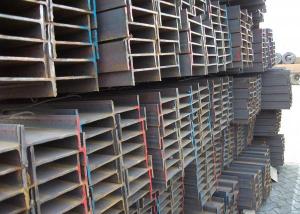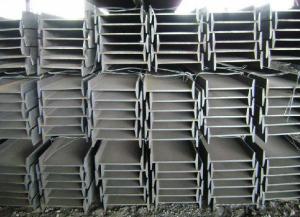IPE-Beams from Size 80-200 with Material Grade Q235
- Loading Port:
- Tianjin
- Payment Terms:
- TT OR LC
- Min Order Qty:
- 25 m.t.
- Supply Capability:
- 10000 m.t./month
OKorder Service Pledge
OKorder Financial Service
You Might Also Like
Product Description:
OKorder is offering high quality Hot Rolled Steel I-Beams at great prices with worldwide shipping. Our supplier is a world-class manufacturer of steel, with our products utilized the world over. OKorder annually supplies products to European, North American and Asian markets. We provide quotations within 24 hours of receiving an inquiry and guarantee competitive prices.
Product Applications:
1. Supporting members, most commonly in the house raising industry to strengthen timber bears under houses. Transmission line towers, etc
2. Prefabricated structure
3. Medium scale bridges
4. It is widely used in various building structures and engineering structures such as roof beams, bridges, transmission towers, hoisting machinery and transport machinery, ships, industrial furnaces, reaction tower, container frame and warehouse etc.
Product Advantages:
OKorder's Steel I-Beams are durable, strong, and resist corrosion.
Main Product Features:
· Premium quality
· Prompt delivery & seaworthy packing (30 days after receiving deposit)
· Corrosion resistance
· Can be recycled and reused
· Mill test certification
· Professional Service
· Competitive pricing
Product Specifications:
1. Invoicing on theoretical weight or actual weight as customer request
2. Standard: EN10025, GB Standard, ASTM
3. Grade: Q235B, Q345B, SS400, ASTM A36, S235JR, S275JR
4. Length: 5.8M, 6M, 9M, 12M as following table
5. Sizes: 80mm-270mm
Dimensions(mm) | |||||
h | b | s | t | Mass Kg/m | |
IPE80 | 80 | 46 | 3.80 | 5.20 | 6.00 |
IPE100 | 100 | 55 | 4.10 | 5.70 | 8.10 |
IPE120 | 120 | 64 | 4.80 | 6.30 | 10.40 |
IPE140 | 140 | 73 | 4.70 | 6.90 | 12.90 |
IPE160 | 160 | 82 | 5.00 | 7.40 | 15.80 |
IPE180 | 180 | 91 | 5.30 | 8.00 | 18.80 |
IPE200 | 200 | 100 | 5.60 | 8.50 | 22.40 |
IPE220 | 220 | 110 | 5.90 | 9.20 | 26.20 |
IPE240 | 240 | 120 | 6.20 | 9.80 | 30.70 |
IPE270 | 270 | 135 | 6.60 | 10.20 | 36.10 |
FAQ:
Q1: Why buy Materials & Equipment from OKorder.com?
A1: All products offered byOKorder.com are carefully selected from China's most reliable manufacturing enterprises. Through its ISO certifications, OKorder.com adheres to the highest standards and a commitment to supply chain safety and customer satisfaction.
Q2: How do we guarantee the quality of our products?
A2: We have established an advanced quality management system which conducts strict quality tests at every step, from raw materials to the final product. At the same time, we provide extensive follow-up service assurances as required.
Q3: How soon can we receive the product after purchase?
A3: Within three days of placing an order, we will begin production. The specific shipping date is dependent upon international and government factors, but is typically 7 to 10 workdays.
Images:
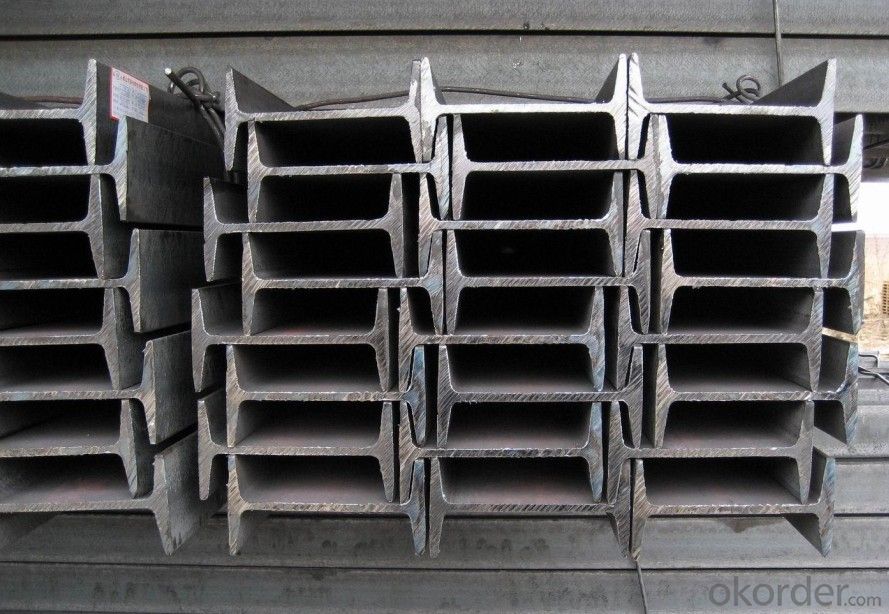
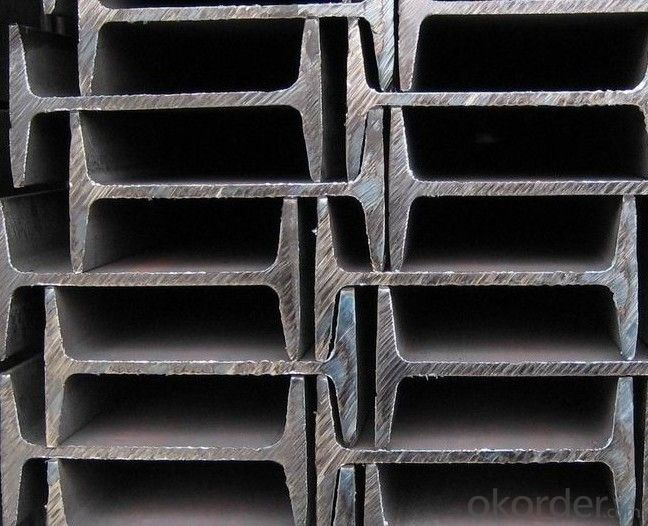
- Q: No. 11 I-beam one meter multiple
- I-steel whether ordinary or light, because the section size are relatively high and narrow, so the moment of inertia of section two of the spindle is larger, so it only can be directly used in the web plane bending member or the composition of lattice stress components. Neither the axial compression member nor the bent member perpendicular to the web plane shall be adopted.
- Q: Can steel I-beams be used in performing arts venues or theaters?
- Yes, steel I-beams can be used in performing arts venues or theaters. Steel I-beams are commonly used in construction due to their strength and durability. In the context of performing arts venues or theaters, steel I-beams can be utilized in various ways. They can be used as structural elements to support the roof and walls, providing a solid and sturdy framework for the building. Additionally, they can be used to create elevated platforms or catwalks for technicians and performers, ensuring a safe and stable working environment. Moreover, steel I-beams can be used to construct rigging systems for lighting, sound, and special effects equipment, allowing for optimal positioning and movement of these elements during performances. Overall, the use of steel I-beams in performing arts venues offers a reliable and versatile solution for creating a functional and visually appealing space.
- Q: Can steel I-beams be used in energy-efficient building designs?
- Energy-efficient building designs can incorporate steel I-beams as they offer numerous benefits. Firstly, steel I-beams possess a high strength-to-weight ratio, allowing for the construction of lighter and slender structural elements. This means that less material is required, resulting in a reduced overall weight of the building. Consequently, less energy is needed during construction, transportation, and erection, leading to lower embodied energy. Additionally, steel I-beams can be manufactured with great precision, ensuring accurate dimensions and minimizing waste during construction. Furthermore, the use of prefabricated steel components accelerates the construction process, reducing energy consumption related to on-site labor and equipment. In terms of energy efficiency during the operational phase, steel I-beams contribute to the thermal performance of a building. Steel has low thermal conductivity, meaning it is a poor conductor of heat. Consequently, it enables better insulation and reduces heat transfer through the building envelope, resulting in decreased heating and cooling loads. Furthermore, steel can be combined with insulation and thermal breaks to create a more energy-efficient building envelope. Moreover, steel is highly durable and resistant to pests, rot, and decay. This durability minimizes the need for frequent maintenance and replacement, thereby conserving energy and resources in the long run. In conclusion, due to their high strength-to-weight ratio, precision manufacturing, thermal performance, durability, and potential for prefabrication, steel I-beams can effectively contribute to energy-efficient building designs.
- Q: Can steel I-beams be used in data centers or tech facilities?
- Yes, steel I-beams can be used in data centers or tech facilities. Steel I-beams are commonly used in construction due to their strength, durability, and ability to bear heavy loads. In data centers or tech facilities, where there is a need for structural support and the ability to accommodate heavy equipment, steel I-beams can provide the necessary strength and stability. Additionally, steel I-beams can be easily integrated into the design of these facilities to create open spaces and flexible layouts.
- Q: How do steel I-beams perform in terms of vibration control?
- The exceptional strength and load-bearing capabilities of steel I-beams are widely acknowledged. However, their ability to control vibrations may vary depending on various factors. To begin with, steel I-beams have a specific frequency at which they naturally vibrate. This frequency is determined by their dimensions, material properties, and overall structural configuration. If the vibration's frequency matches the beam's natural frequency, resonance can occur, resulting in heightened vibrations that could compromise the structure's integrity. To mitigate vibrations in steel I-beams, several strategies can be employed. One common approach involves increasing the beam's stiffness by adding extra steel plates or braces. This raises the beam's natural frequency, reducing its susceptibility to resonance with external vibrations. Furthermore, damping systems can be integrated into the design of steel I-beams to dissipate energy and minimize vibrations. These systems typically consist of damping materials like viscoelastic polymers or rubber pads, which absorb and dissipate vibrational energy. It is important to note that the vibration control performance of steel I-beams can also be influenced by the surrounding structural elements and the overall design of the building or structure. For example, the presence of other damping elements like tuned mass dampers or base isolators can further enhance the vibration control capabilities of steel I-beams. To summarize, steel I-beams possess natural frequencies that impact their vibration control performance. By increasing stiffness and incorporating damping systems, vibrations can be mitigated, ensuring the overall structural integrity. However, it is vital to consider specific design requirements and surrounding structural elements to optimize the vibration control performance of steel I-beams.
- Q: What are the different types of steel I-beam connections for staircases?
- Some common types of steel I-beam connections for staircases include bolted connections, welded connections, and bracket connections. Bolted connections involve using bolts to attach the I-beam to other structural components. Welded connections involve welding the I-beam to other steel components. Bracket connections involve using steel brackets to connect the I-beam to other structural members. These different types of connections provide stability and support for staircases while ensuring structural integrity.
- Q: Can steel I-beams be used in stadium construction?
- Yes, steel I-beams can be used in stadium construction. In fact, steel I-beams are commonly used in the construction of stadiums due to their strength and versatility. They provide structural support and can withstand heavy loads, making them ideal for large-scale projects like stadiums. Additionally, steel I-beams can be customized and fabricated to meet the specific design and architectural requirements of the stadium, ensuring a safe and efficient construction process.
- Q: What are the common finishes for steel I-beams?
- There are various finishes available for steel I-beams, including hot-dip galvanizing, priming and painting, and powder coating. Hot-dip galvanizing is a method that involves coating the steel I-beam with zinc, which protects it against corrosion and ensures its durability. This finish is commonly used in outdoor applications where the I-beam will be exposed to moisture or harsh environmental conditions. Another option is priming and painting, which entails applying a layer of primer to the surface of the I-beam to enhance adhesion, followed by one or more coats of paint. This not only provides a protective barrier against corrosion but also allows for customization in terms of color and appearance. Powder coating is a different finish that entails electrostatically applying a dry powder onto the I-beam's surface. The powder is then cured under heat, resulting in a strong and long-lasting finish. Powder coating offers excellent corrosion resistance, as well as a wide range of color options and a smooth, even appearance. It is important to consider the specific requirements of the application when choosing a finish for steel I-beams. Factors such as the environment, aesthetic preferences, and level of corrosion resistance needed should all be taken into account.
- Q: How do steel I-beams contribute to the overall cost-effectiveness of a construction project?
- Steel I-beams contribute to the overall cost-effectiveness of a construction project by providing a durable and efficient structural solution. Their high strength-to-weight ratio allows for lighter foundations and reduced material usage, resulting in lower construction costs. Additionally, their versatility and ease of installation save time and labor expenses, making steel I-beams a cost-effective choice for long-span structures and high-rise buildings.
- Q: What are the typical connection methods for steel I-beams?
- The typical connection methods for steel I-beams include welding, bolting, and riveting. Welding is a common method where the beams are fused together using heat, creating a strong and continuous connection. Bolting involves using bolts and nuts to fasten the beams together, providing a secure connection that can be easily disassembled if needed. Riveting is another method where metal pins called rivets are used to join the beams by passing them through pre-drilled holes and then hammering them to create a permanent connection. These connection methods ensure the stability and structural integrity of steel I-beams in various applications.
Send your message to us
IPE-Beams from Size 80-200 with Material Grade Q235
- Loading Port:
- Tianjin
- Payment Terms:
- TT OR LC
- Min Order Qty:
- 25 m.t.
- Supply Capability:
- 10000 m.t./month
OKorder Service Pledge
OKorder Financial Service
Similar products
Hot products
Hot Searches
Related keywords
